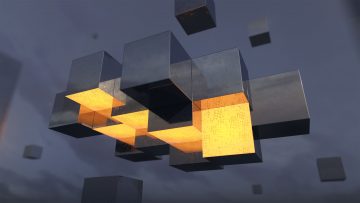Kevin Hartnett in Quanta:
 A team of mathematicians has finally finished off Keller’s conjecture, but not by working it out themselves. Instead, they taught a fleet of computers to do it for them.
A team of mathematicians has finally finished off Keller’s conjecture, but not by working it out themselves. Instead, they taught a fleet of computers to do it for them.
Keller’s conjecture, posed 90 years ago by Ott-Heinrich Keller, is a problem about covering spaces with identical tiles. It asserts that if you cover a two-dimensional space with two-dimensional square tiles, at least two of the tiles must share an edge. It makes the same prediction for spaces of every dimension — that in covering, say, 12-dimensional space using 12-dimensional “square” tiles, you will end up with at least two tiles that abut each other exactly.
Over the years, mathematicians have chipped away at the conjecture, proving it true for some dimensions and false for others. As of this past fall the question remained unresolved only for seven-dimensional space.
But a new computer-generated proof has finally resolved the problem.
More here.
